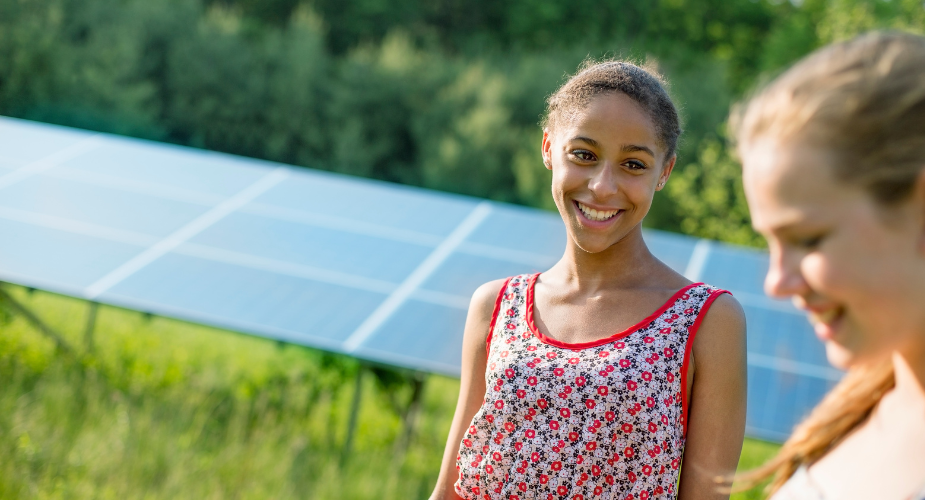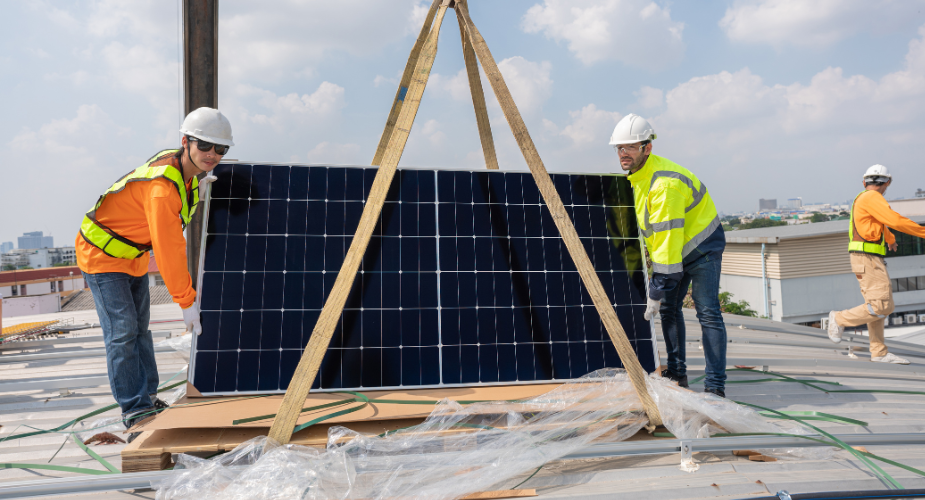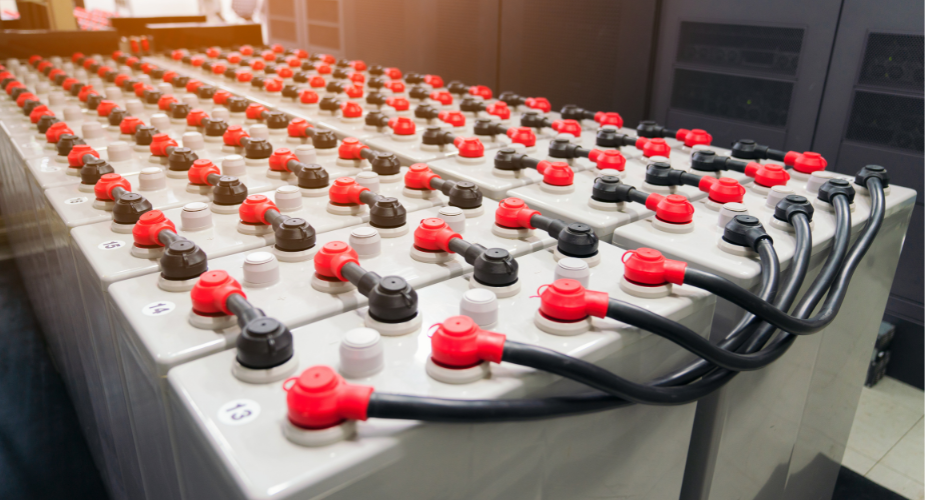As the world faces growing environmental challenges, people are shifting towards renewable energy. The rising cost of electricity and the urgent need to reduce carbon emissions have sparked a global demand for cleaner power sources. Among the most accessible and efficient options are solar and wind power. These are two renewable technologies that offer a reliable and eco-friendly energy solution. By combining the strengths of both systems, we can enjoy round-the-clock energy generation. Also, it will significantly reduce our environmental impact. So in this article, let's learn how we can maximize these sources.

Things to know about Wind and Solar Power
- What Is Solar and Wind Power?
- How Solar and Wind Power Work Together
- Benefits of Using Solar and Wind Power
- Cost and Installation Considerations
- Solar and Wind Power Right for You?
What Is Solar and Wind Power?
Solar power uses energy from the sun to generate electricity. Solar panels capture sunlight and convert it into direct current (DC) electricity. An inverter then transforms this into alternating current (AC), which powers homes and businesses. This process happens silently and without producing harmful emissions.
Wind power, on the other hand, harnesses the kinetic energy of moving air. When wind blows across the blades of a wind turbine, it causes them to spin. This motion drives a generator, which produces electricity. Like solar, wind power works cleanly and efficiently without burning fossil fuels.
Both solar energy and wind power are renewable, meaning they rely on natural resources that won’t run out. They also produce zero greenhouse gas emissions during operation. Thus making them powerful allies in the fight against climate change. Together, they offer a sustainable path toward a cleaner, more energy-secure future.
How Solar and Wind Power Work Together
Hybrid renewable energy systems combine solar panels and wind turbines to maximize energy generation. These systems take advantage of both sun and wind. Thus allowing them to produce power more consistently throughout the day and across different seasons.
Solar panels perform best during sunny daylight hours. Meanwhile wind turbines often generate more electricity at night or during cloudy, windy weather. By working together, the two systems create a more balanced and reliable energy supply. This combination helps reduce dependence on the grid. Also, it minimizes the need for backup generators or large battery storage.
Using both wind and solar power also improves energy efficiency. Additionally, it ensures better coverage during weather fluctuations. Homeowners, businesses, and off-grid setups can enjoy round-the-clock renewable power by investing in a hybrid system. Thus making it a smart and sustainable choice for long-term energy independence.
Benefits of Using Solar and Wind Power
Solar energy and wind power offer a wide range of benefits. They are an attractive option for households, businesses, and communities alike.
From an environmental perspective, both energy sources significantly reduce carbon emissions. They generate electricity without burning fossil fuels. Meaning, they produce no greenhouse gases during operation. Additionally, solar panels and wind turbines consume no fuel. Thus helping conserve natural resources and reduce air and water pollution.
The economic benefits are just as compelling. By generating your own power, you can lower your electricity bills and protect yourself from rising energy prices. Over time, the savings often outweigh the upfront costs of installation. Many governments also support renewable energy adoption through rebates, tax incentives, and feed-in tariffs. With this, it makes solar and wind power systems even more affordable.
When it comes to reliability, wind and solar power provide greater energy security. These systems continue to generate power during grid outages. Especially when paired with batteries or hybrid setups. Thus ensuring you stay powered during emergencies or extreme weather events. This resilience adds peace of mind and supports energy independence for both urban and remote areas.
Cost and Installation Considerations
Investing in wind and solar power requires upfront planning, but the long-term savings make it worthwhile. While initial costs can vary based on system size and technology, many households and businesses recover their investment within a few years. It is possible through reduced energy bills and government incentives.
The installation process starts with an energy assessment. Professionals evaluate your property’s suitability by looking at factors. These include sunlight exposure, wind availability, roof or land space, and your energy usage. They then design a custom system that fits your needs. This may include solar panels, a wind turbine, inverters, and battery storage. Once approved, technicians install the equipment and connect it to your power system. Thus ensuring everything operates safely and efficiently.
Before installing a hybrid system, you should consider your location, energy goals, and budget. Areas with strong sun and consistent wind offer the best performance, but even moderate conditions can work well with the right setup. It's also important to size the system correctly. Too small, and it won’t meet your needs; too large, and you might overspend without seeing added value.
Solar and Wind Power Right for You?
Before investing in a hybrid renewable system, it’s important to assess whether solar and wind power suit your specific situation. Use this quick checklist to help you decide:
-
Do you get consistent sunlight throughout the year?
-
Does your property experience regular wind, especially at higher elevations or open spaces?
-
Do you have enough roof or land space for panels and a turbine?
-
Is your energy usage high enough to justify a hybrid setup?
-
Do you have the budget for upfront costs or access to financing options?
-
Are you looking to reduce your reliance on the grid or live off-grid?
Households in suburban or rural areas, farms with open land, and small businesses with high energy usage can benefit significantly from combining solar and wind power. These systems offer energy independence, long-term savings, and smaller carbon footprints. Thus making them both practical and eco-conscious.
Recommended Solar and Wind Power Generator
One excellent solar and wind power for home use is the Nature’s Generator MyGrid 10K Solar and Wind Generator. This all-in-one system includes solar panels, a wind turbine, and a power pod setup that delivers up to 10,496Wh battery of battery capacity. Designed for both on-grid and off-grid scenarios, it supports essential household appliances during outages or as a full-time energy source. With plug-and-play components, expansion capability, and weather-resistant construction, it makes transitioning to hybrid renewable energy simple and efficient.
Key Benefits of Nature’s Generator MyGrid 10K:
-
Combines both solar and wind power for continuous energy generation
-
High-capacity battery and inverter suitable for home use
-
Expandable system to grow with your energy needs
-
Ideal for off-grid living or as backup power for emergencies
-
Easy to install with minimal technical expertise required
-
Clean, silent operation with zero emissions
Conclusion
By combining solar and wind power, you can take control of your energy use while supporting a cleaner, more sustainable future. These renewable sources work together to deliver consistent, reliable electricity. Whether you're looking to lower your electricity bills, reduce your carbon footprint, or become more energy independent, a hybrid system offers a smart and future-ready solution.
With tools like the Nature's Generator MyGrid 10K Solar and Wind Generator for Home, making the switch has never been easier. Now is the perfect time to invest in clean energy that benefits both your home and the planet. Harness the power of the sun and wind and take the first step toward a greener tomorrow.













